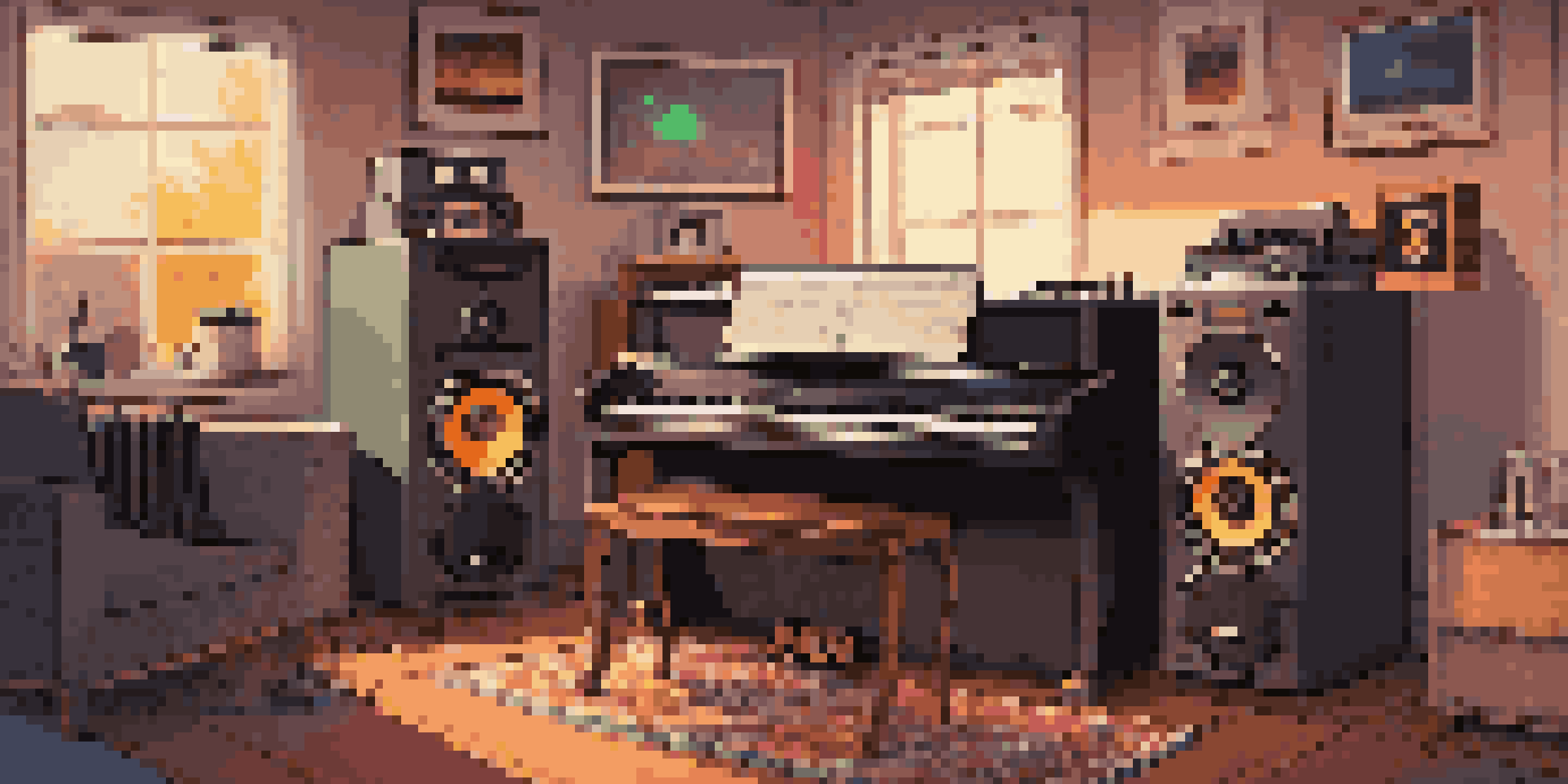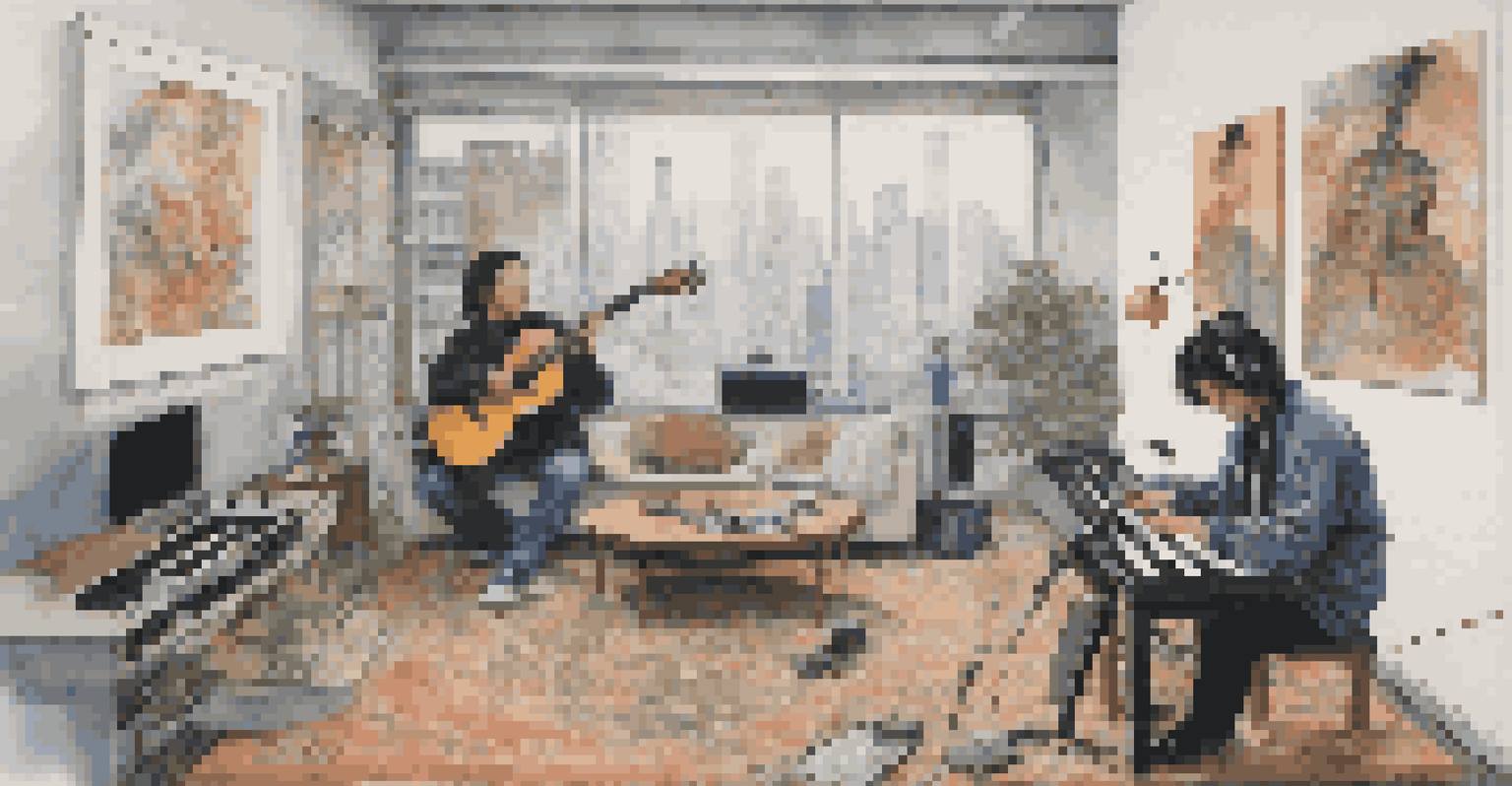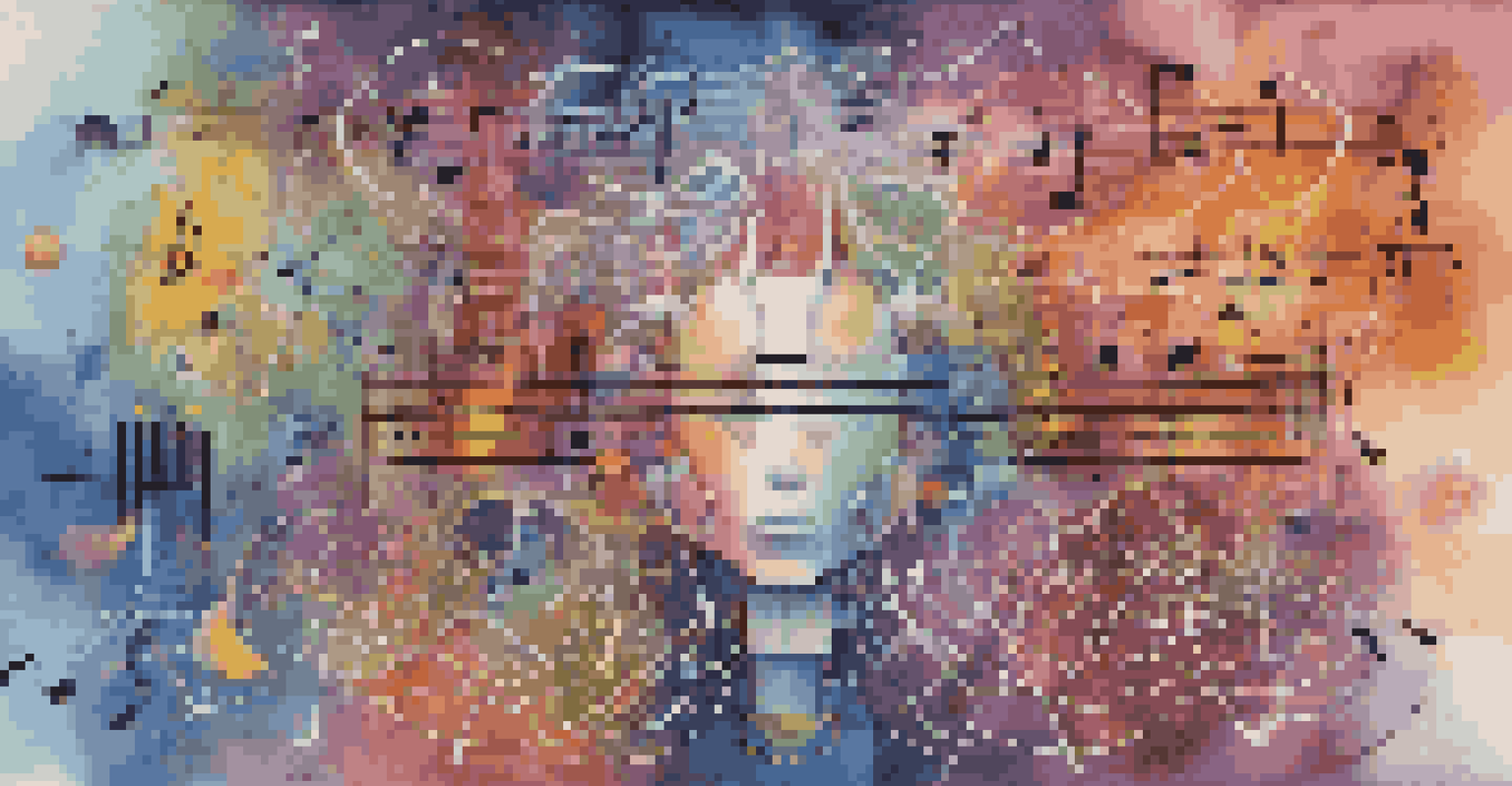The Impact of Technology on Modern Music Composition

The Evolution of Music Tools: From Analog to Digital
Historically, musicians relied on analog tools such as instruments and tape recorders, which shaped how music was composed. With the advent of digital technology, these traditional methods have transformed into sophisticated software and hardware that open up new possibilities for creation. Digital audio workstations (DAWs), for instance, allow artists to compose, edit, and produce music all within one platform, significantly streamlining the process.
Music is the shorthand of emotion.
Think of it like shifting from a typewriter to a computer; the capabilities expand dramatically. Musicians can now manipulate sound in ways that were once unimaginable, layering tracks, adding effects, and experimenting with different sounds easily. This shift not only enhances efficiency but also inspires creativity, as artists explore new genres and styles.
Furthermore, the accessibility of these tools means that anyone with a computer can start composing music. This democratization of music production has led to an explosion of diverse sounds and voices in the music industry, enriching the overall landscape of modern music.
The Role of Software in Music Composition Today
Software has become a fundamental part of music composition, enabling artists to bring their visions to life with precision. Programs such as Ableton Live, Logic Pro, and FL Studio offer a range of features, from virtual instruments to advanced editing capabilities. These tools allow musicians to experiment with sounds and arrangements without the constraints of traditional recording methods.

For example, a musician can create a full orchestral piece using only digital software, layering individual instrument tracks to achieve a rich sound. This not only saves time but also reduces costs associated with hiring live musicians or booking studio time. The flexibility of digital composition means that artists can iterate on their work quickly, refining their pieces until they achieve the desired result.
Digital Tools Enhance Music Creation
The shift from analog to digital tools has revolutionized music composition, allowing artists to create, edit, and produce with unprecedented efficiency and creativity.
Moreover, many of these software programs come equipped with built-in tutorials and communities, making it easier for beginners to learn and grow their skills. This accessibility encourages more people to engage in music creation, leading to a vibrant and varied musical landscape.
Collaboration and Remote Music Creation
Technology has revolutionized the way musicians collaborate, allowing them to work together from anywhere in the world. With tools like cloud storage and collaborative platforms, artists can share tracks, provide feedback, and create music in real-time, regardless of their physical location. This has led to a global exchange of ideas and styles, enriching the music produced.
Technology is best when it brings people together.
Imagine a musician in New York collaborating with another in Tokyo, blending their unique influences to create something completely fresh. This kind of collaboration was much harder to achieve before the digital age, often requiring everyone to be in the same room. Now, artists can record their parts independently and assemble them digitally, creating a seamless workflow.
Additionally, online platforms have made it easier to find collaborators, whether through social media or dedicated music networks. This opens up opportunities for emerging artists to connect with established names, fostering a sense of community and shared creativity.
Artificial Intelligence: A New Frontier in Music
Artificial Intelligence (AI) is becoming a game-changer in music composition, offering tools that can analyze patterns, generate melodies, and even assist in songwriting. AI algorithms can study vast amounts of music data to understand what makes a song appealing, helping artists create tracks that resonate with audiences. This technology acts as a collaborator, providing inspiration and new ideas.
For instance, platforms like Amper Music allow users to input parameters like mood and genre, and the AI generates a piece of music tailored to those specifications. This can be particularly useful for content creators who need background music quickly and efficiently. While some may argue that this takes away from the human element, others see it as an innovative way to enhance creativity.
AI Transforms Music Composition
Artificial Intelligence is emerging as a collaborative partner in music, providing tools that help artists generate ideas and enhance their creative processes.
Moreover, AI can assist in the mixing and mastering process, suggesting adjustments to improve sound quality. This not only saves time but also allows artists to focus on the creative aspects of their work, proving that technology can be a valuable partner in the art of music.
The Influence of Streaming Services on Music Creation
Streaming services have fundamentally changed how music is consumed, and this has a direct impact on how it's created. Artists now consider streaming platforms when composing, often tailoring their songs to fit the trends and preferences of listeners. This shift has led to the rise of shorter songs and hooks that capture attention quickly, as artists aim to engage audiences in a fast-paced digital landscape.
Think of it as adapting to a new audience; just as radio hits were once crafted to catch listeners' ears, today’s musicians are doing the same with streaming metrics in mind. Artists analyze data on listener behavior, such as song skips and replay rates, to refine their compositions and marketing strategies. This data-driven approach can help ensure that their music reaches a wider audience.
Moreover, the accessibility of streaming has encouraged experimentation across genres, as artists feel less constrained by traditional album formats. This freedom allows for a more diverse range of musical expressions, ultimately enriching the listening experience for fans.
Social Media: A New Platform for Promotion and Feedback
Social media has transformed the way musicians promote their work and engage with fans. Platforms like Instagram, TikTok, and Twitter allow artists to share snippets of their music, behind-the-scenes content, and personal stories, creating a direct connection with their audience. This interaction not only builds a fan base but also offers immediate feedback on their music.
For example, a quick video of a new song can go viral on TikTok, leading to increased streams and visibility for the artist. This kind of organic promotion was much harder to achieve in the past, where traditional marketing methods dominated the landscape. Now, musicians have the power to create buzz around their work with just a few clicks.
Streaming Shapes Modern Music Trends
The rise of streaming services has influenced how artists create music, leading to shorter songs and data-driven approaches to engage audiences effectively.
Additionally, social media enables collaboration with influencers and other artists, further expanding reach. This new landscape encourages musicians to be more authentic and relatable, fostering a sense of community and shared passion among fans and creators alike.
The Future of Music Composition in a Tech-Driven World
As technology continues to evolve, the future of music composition looks promising and exciting. We can expect advancements in virtual reality (VR) and augmented reality (AR) to play a role in how music is experienced and created. Imagine composing music in a fully immersive environment where you can visualize sounds and manipulate them in real-time.
Moreover, as AI technology progresses, we may see even more sophisticated tools that can help artists push creative boundaries. This could lead to new genres and forms of expression that we can't even imagine yet. The possibilities seem endless, as technology opens up new avenues for collaboration and innovation.

Ultimately, the fusion of technology and music composition not only enhances creativity but also makes the art form more accessible than ever. As we embrace these changes, we can look forward to a vibrant future filled with diverse sounds and groundbreaking compositions.